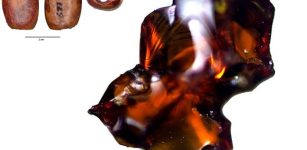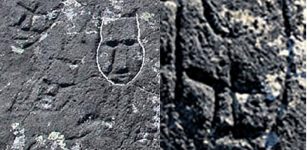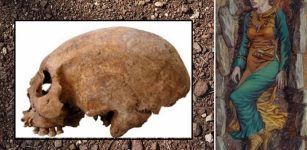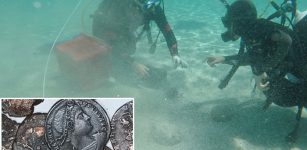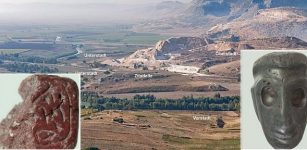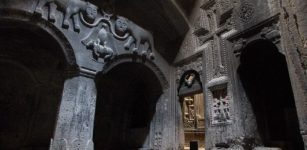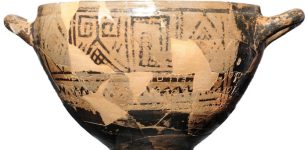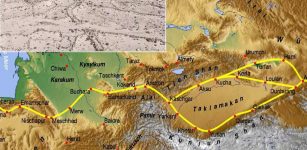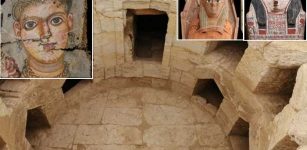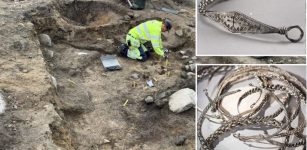Ornamental Bronze Wall Plate Unearthed In Ayanis Castle Built By Urartian King Rusa II
Conny Waters - AncientPages.com - For 31 years, archaeologists have conducted excavation and restoration works in the ruins of the Ayanis Castle. The castle has a size of 100x 400 m and is one of the civilization’s most magnificent structures thanks to its mudbrick walls and stone engravings.
It is also among the most magnificent constructions of the Iron Age Kingdom of Urartu.
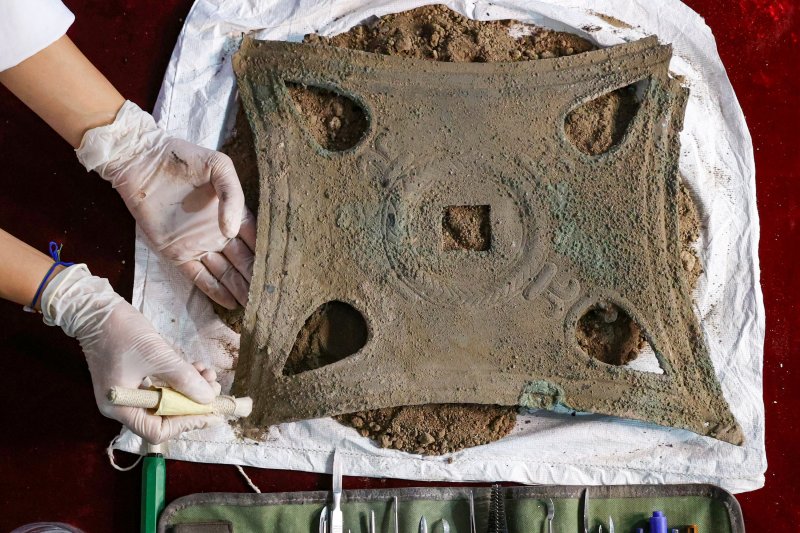 The ancient bronze wall plate unearthed in Ayanis Castle, Van, eastern Türkiye, Sept. 8, 2022. Image credit - Anadolu Agency
The ancient bronze wall plate unearthed in Ayanis Castle, Van, eastern Türkiye, Sept. 8, 2022. Image credit - Anadolu Agency
Four new interconnected rooms were unearthed on the northern slope of the hill on which the castle is being excavated under the direction of lead archeologist, professor Mehmet Işıklı.
Now, archaeologists unearthed an intact bronze plate believed to be used as a wall ornament by the royal Urartian family.
"There are rows of interconnected room groups ... Many findings, particularly ceramics, were uncovered in the rooms. Numerous groups of wooden structures were also found. These provide us with important information on the details of the Urartian architecture, but we haven't yet determined what the rooms were used for," as cited by Daily Sabah.
The ancient bronze wall plate unearthed in Ayanis Castle, Van, eastern Türkiye, Sept. 8, 2022. Image credit - Anadolu Agency
The castle's location on a hill (1866 m above sea level) about 35 km north of Van near to a village Agaru (old Ayanis) and only 250 m inland from Lake Van - is impressive. Its decorated mudbrick walls and stone engravings managed to survive to date in the Tuşba district of Van area.
See also:
Mysterious 3,000-Year-Old Underwater Urartu Castle Discovered
Excavations At Urartu Fortress Will Shed Light On Mysteries Of Ancient Temple
Ancient Urartu Settlement, Water Tunnel And Rock Tombs Found In Erzurum, Eastern Turkey
2019 excavations work with a 2,700-year-old mystic Haldi temple in the castle. Image credit: Anadolu Agency
Built by Urartian King Rusa II (680-639 BC), the structure has long history. Also the history of Van Lake - the largest lake in Turkey and the second largest in the Middle East, goes back to about 6,000 years. It was formed by a crater caused by a volcanic explosion of Mount Nemrut near the province of Van.
Excited by the "unique" bronze wall plate found in one of the rooms, Işıklı said it was the only specimen of its kind that has been unearthed in one piece, unlike fragments that had been found on other occasions.
The plate was likely used as an architectural embelishment, he added.
Written by Conny Waters - AncientPages.com Staff Writer




